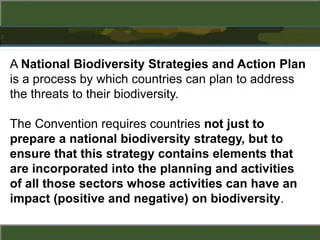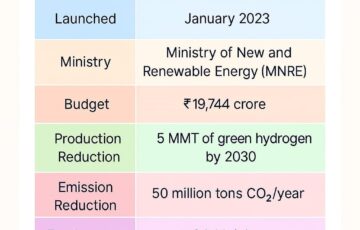India Launches Updated Biodiversity Strategy at COP 16
Why in the news?
Minister Kirti Vardhan Singh introduced India’s revised NBSAP, focusing on ecosystem restoration, community conservation, and sustainable management, aiming to halt biodiversity loss by 2030 and promote ecological harmony.
About the Launch of India’s Updated Biodiversity Strategy:
- Minister of State for Environment, Kirti Vardhan Singh, unveiled India’s updated National Biodiversity Strategy and Action Plan (NBSAP) at the 16th Conference of Parties (COP 16) held in
- The updated NBSAP emphasises a collaborative approach, involving both government and society, to address pressing environmental issues.
- This strategy builds upon India’s commitment to biodiversity conservation by introducing focused and integrated solutions to environmental challenges.
Key Focus Areas of the Updated NBSAP:
- The revised NBSAP prioritises ecosystem restoration, aiming to rehabilitate degraded landscapes and improve biodiversity resilience.
- It highlights initiatives for the protection and restoration of wetlands, as well as sustainable management practices for India’s marine and coastal areas.
- The strategy also includes species recovery programs and promotes community-driven conservation efforts, engaging local communities in biodiversity preservation.
Understanding the CBD COP 16:
Convention on Biological Diversity (CBD)
- Establishment: Opened for signature at the 1992 Rio Earth Summit; in force since December 29, 1993
- Objective: Address the global loss of biodiversity and promote sustainable use of biological resources
- Ratification: Ratified by 196 nations, making it one of the most widely adopted treaties; the U.S. is the only UN member not ratified
- Headquarters: Secretariat in Montreal, Canada
- Main Goals:
- Conservation of biodiversity
- Sustainable use of biodiversity components
- Fair and equitable sharing of benefits from genetic resources
Supplementary Protocols
- Cartagena Protocol on Biosafety (2003): Manages risks associated with transboundary LMOs
- Nagoya Protocol (2014): Ensures fair sharing of benefits from genetic resources
COP 16 Focus and 30 x 30 Goal:
- Kunming-Montreal Framework: 23 targets and 4 global goals for biodiversity by 2030
- 30 x 30 Target: Protect 30% of global lands and oceans and restore 30% of degraded areas by





